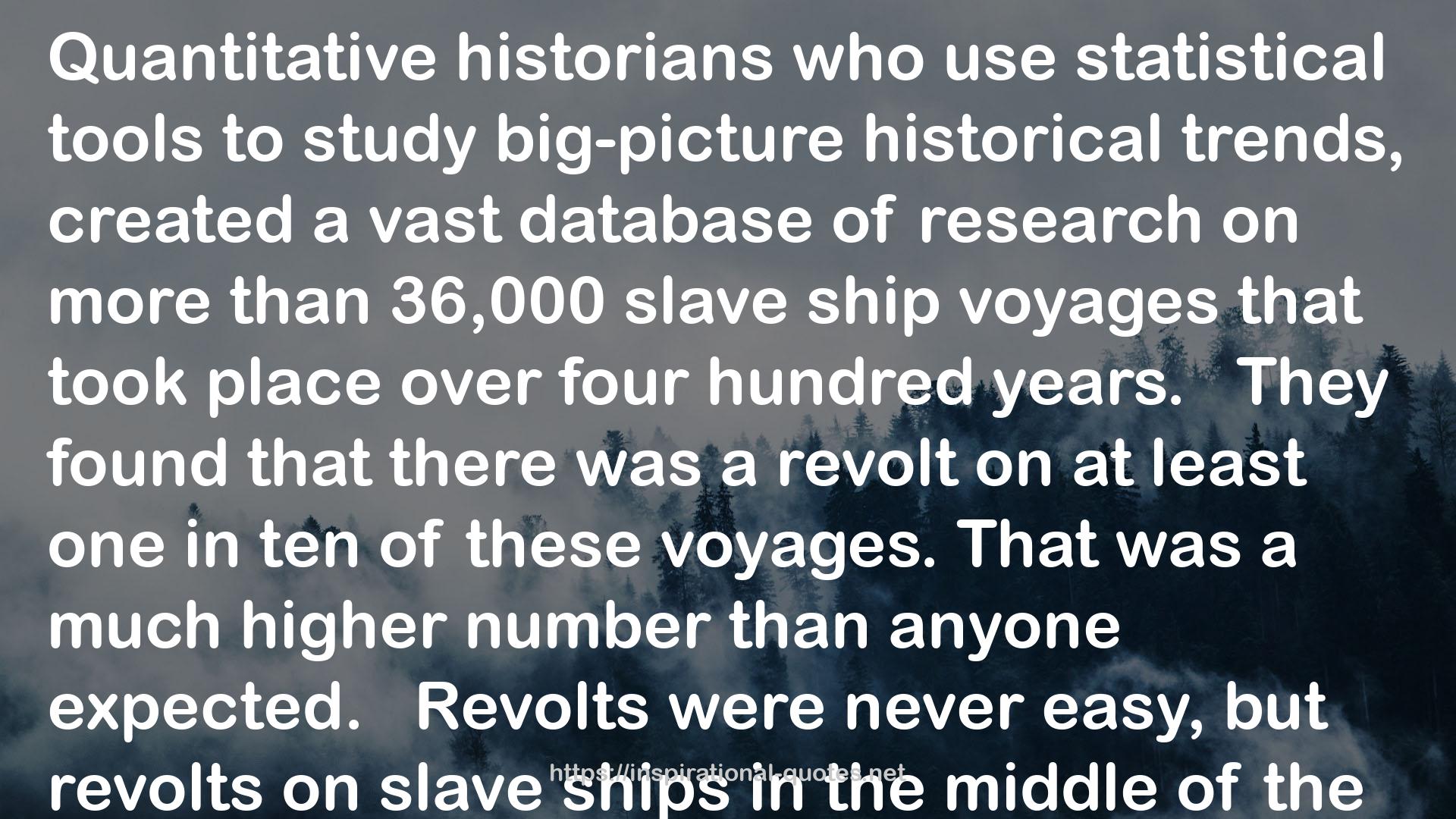" Quantitative historians who use statistical tools to study big-picture historical trends, created a vast database of research on more than 36,000 slave ship voyages that took place over four hundred years.
They found that there was a revolt on at least one in ten of these voyages. That was a much higher number than anyone expected.
Revolts were never easy, but revolts on slave ships in the middle of the Atlantic Ocean were basically suicide missions. Nonetheless, many captives chose death over this exceptionally horrid new kind of slavery.
This type of resistance was so expensive and time-consuming for the slavers, these historians estimate that it prevented at least a million more people from being captured and entering the slave trade. So why would a revolt happen on one ship and not another? The quantitative historians couldn't find a clear pattern, other than that captives tried to revolt whenever they would. But one thing did stand out: The more women onboard a slave ship, the more likely a revolt.
Let me emphasize this point: the more women onboard a slave ship, the more likely a revolt would occur. "
― , Wake: The Hidden History of Women-Led Slave Revolts
